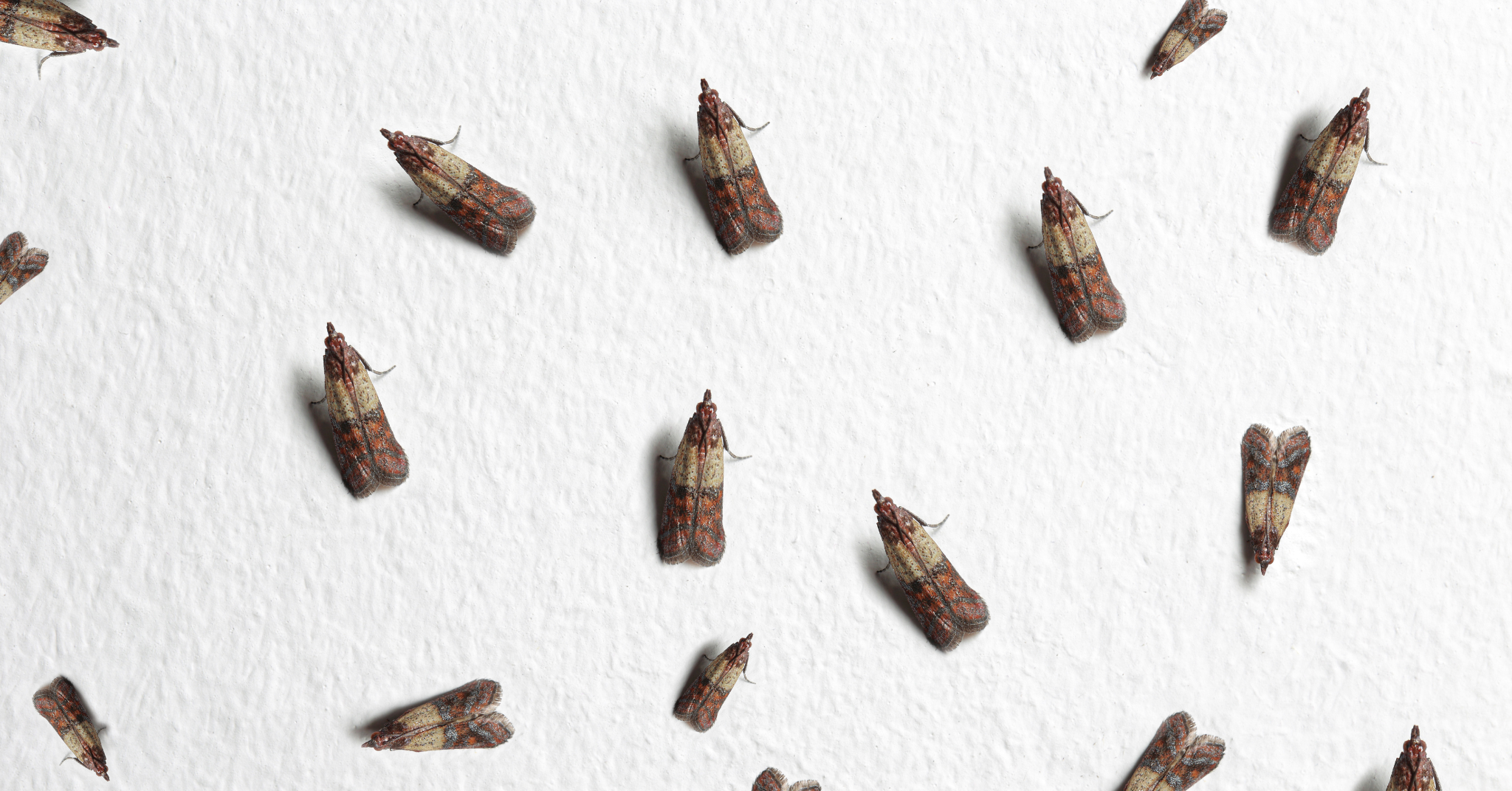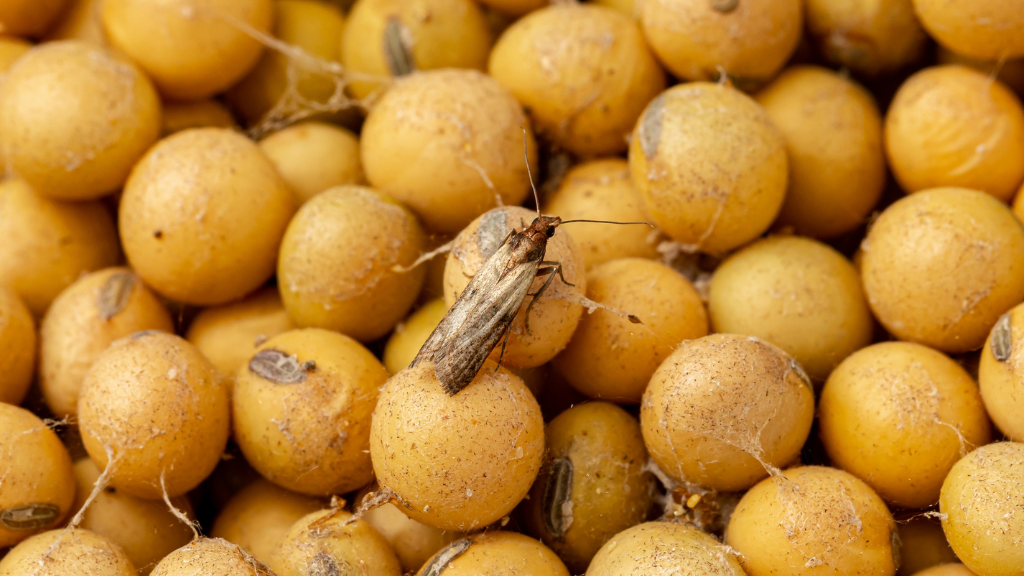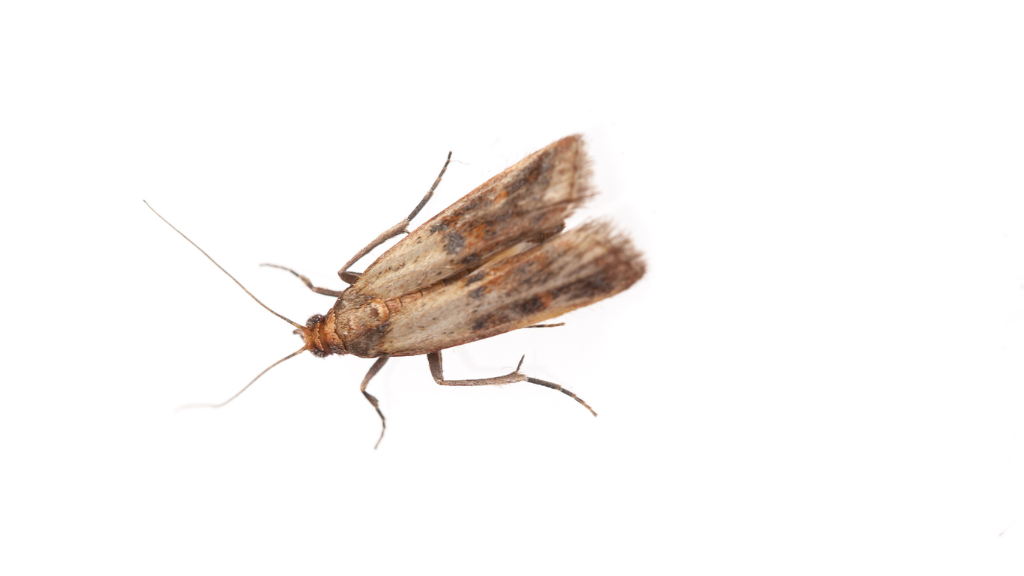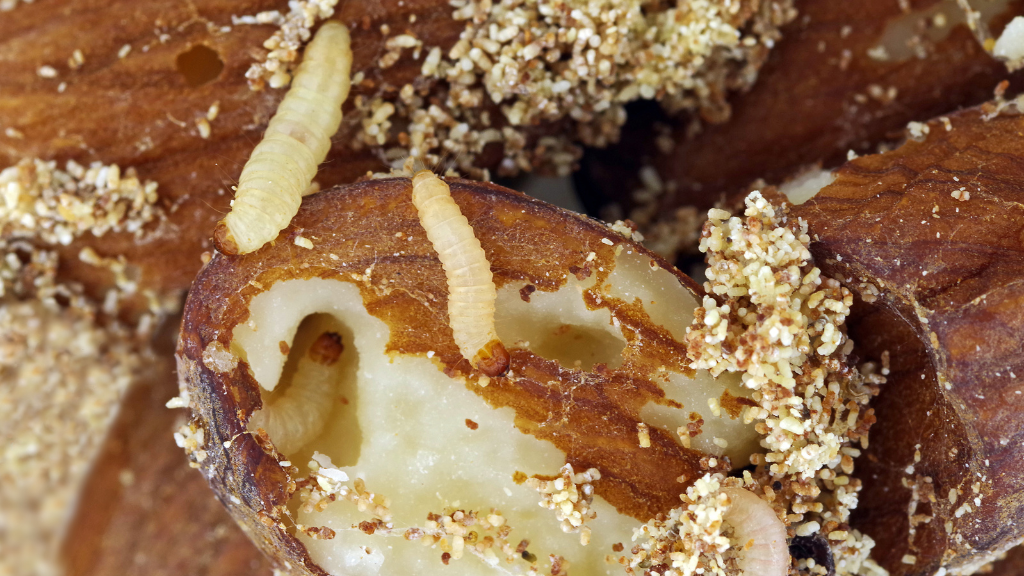5 DIY Tips for Pantry Moths

When it comes to pests sneaking indoors, no one’s a fan. But one place you particularly don’t want these irksome invaders? In your food. Pantry moths are a common type of stored-product pest that can infest food in both residential and commercial kitchens. Try these tips to get rid of pantry moths and protect your food.
LEARN HOW TO PROPERLY IDENTIFY PANTRY MOTHS
Pantry moths are small flying insects who fully mature to an average of ½ inch long and a wingspan of ⅝ inch. These moths are a nuisance at all stages in their life cycle, so knowing how to spot the signs of an infestation at any stage is key to adequately controlling these pests.
An adult pantry moth can lay up to 400 eggs at a time, and these sticky eggs are most likely to be on the surface of the flour, cereal, or grains that the larvae will feast upon after hatching. These caterpillar-like larvae are generally off-white with brownish heads, but occasionally they appear greenish, pink, or tan-bodied.
This stage in the life cycle of a pantry moth is the most destructive to your dried foods. Larvae spin silk webs around themselves and burrow down to eat their way through your last big grocery trip. After a few weeks, pantry moth larvae will move away from their feeding site to finish building the cocoon-like shelter in which they will transform into an adult. The brown pupal casings they leave behind are another sign of an infestation, and these may be several shelves above, below, or even in another room away from the infestation site.
Adult moths have brown or tan wings marked with a coppery section on the outer ⅔ of their wings. These moths are attracted to light and, since they don’t have to feed on pantry goods anymore, can be spotted even in bedrooms on the opposite side of the house.
KNOW HOW PANTRY MOTHS GET INSIDE
Flour, oats, seeds, cornmeal, spices, nuts, dried fruit, processed foods, herbs, crackers, cereal, birdseed—the list of foods that attract pantry moths goes on and on. While a clean kitchen can discourage pantry moths, don’t blame your untidy dishes or unswept floors just yet. Pantry moth eggs are easily overlooked in food quality control systems, and sometimes the hiding spots are difficult to uncover before food is shipped to a grocery store and stocked on the shelves. They could have been lurking inside of a bulk bin at the grocery store or hitchhiking from a farmer’s market.
Since larvae can chew through plastic and cardboard material, a few larvae discovered inside one box may mean neighboring food items have a few inside as well. Eggs may appear as small specks or sticky clumps inside of your flour, or you may find the webbings and shed skins of larvae before discovering a live one. Food items may also be contaminated with pantry moth feces, which look like small, dark pellets and are nearly indistinguishable from some ground foods and spices.
Though pantry moths are more likely to be found inside food containers with a rich supply for them to snack on, they can sometimes support themselves on small spills that aren’t swept up, such as spilled flour in a cupboard or dried fruit kicked under a cabinet.
 REMOVE EXISTING PANTRY MOTHS
REMOVE EXISTING PANTRY MOTHS
To banish the pantry moth eggs or larvae that are hiding out in your kitchen, a careful inspection of food items is in order. Open and inspect boxes, bags, and other food containers to look for any eggs, larvae, pupae, or fluttering adult pantry moths that may be tucked inside. If necessary, empty the food container into another to inspect things thoroughly. Food infested by pantry moths should be sealed tightly and thrown out in a place away from the infestation site, preferably far away from the home.
If you suspect an infestation but can’t see any pantry moth activity in your food (especially when trying to inspect whole grain or kernel foods), seal the food and place it in the freezer for a minimum of four days to kill any lingering pests. It’s best practice, however, to just toss out any infested food.
Next, remove everything from your pantry or cupboards and do a deep cleaning. A thorough sweeping and a detailed vacuum job should clear up any spills that are attracting pests, and a good wash with warm, soapy water on the shelves, walls, and floors of your pantry can eliminate any eggs or larvae hiding out on those surfaces, too.
UPDATE YOUR FOOD STORAGE SYSTEMS
The cardboard, paper, and plastic containers that our food is originally packaged in seem to work wonderfully until tiny chewed holes and small rips start to appear. The flimsy packaging housing the breakfasts, lunches, and dinners we serve our families are no match for hungry pantry moths (and many other pests), and reliance on these thin containers is a recipe for infestation.
Place food in sealed, airtight containers to keep pests out. To keep up with your new storage system, label food stored in these containers with the name of its contents and the date of purchase, if known.
ADOPT GOOD BUYING HABITS
As tempting as it may be, if you’re not certain you’ll use all of the ten pounds of flour on sale at your favorite warehouse store within a few months, it’s not worth saving a few dollars to load up. Some of the more likely spots for pantry moth infestations are within older foods hidden in the back of the pantry. It may seem like a good idea to buy a large amount of a specialty item, but consider the likelihood of frequent use before putting it into your cart. That bag, if left untouched for even a short while, could end up becoming little more than pantry moth food. If you do want to store large quantities of food, it’s imperative that you also invest in airtight storage containers that will keep pests out.
In addition, if you get home and realize you picked up a box of cornstarch but already had some in the pantry, be sure to use up what you have open already. Take a minute to reorganize and rotate items that are kept at the back of the pantry so they’ll be used before opening or buying a new box or bag. If you have space and know you won’t use some items in the next several weeks, tuck them away safely in the freezer (away from bugs) until ready for use.
PROFESSIONAL PANTRY MOTH CONTROL
If you’ve taken all these steps and pantry moths still stick around, consider calling one of our trained pest control professionals. Pantry moth destruction can cost you more than just spoiled food and tossed items—it can take a toll on both your peace of mind and sense of security. Our experts are ready to identify, prevent, and control pantry moths, saving you and your family the headache of doing it all on your own.
SOURCES
https://entomology.ca.uky.edu/ef612
http://npic.orst.edu/pest/pantrymoth.html
https://extension.umd.edu/resource/indian-meal-moth
https://hgic.clemson.edu/factsheet/indian-meal-moth/
https://extension2.missouri.edu/g7370
https://www.almanac.com/news/home-health/natural-living/how-get-rid-pantry-moths-and-worms



 REMOVE EXISTING PANTRY MOTHS
REMOVE EXISTING PANTRY MOTHS

